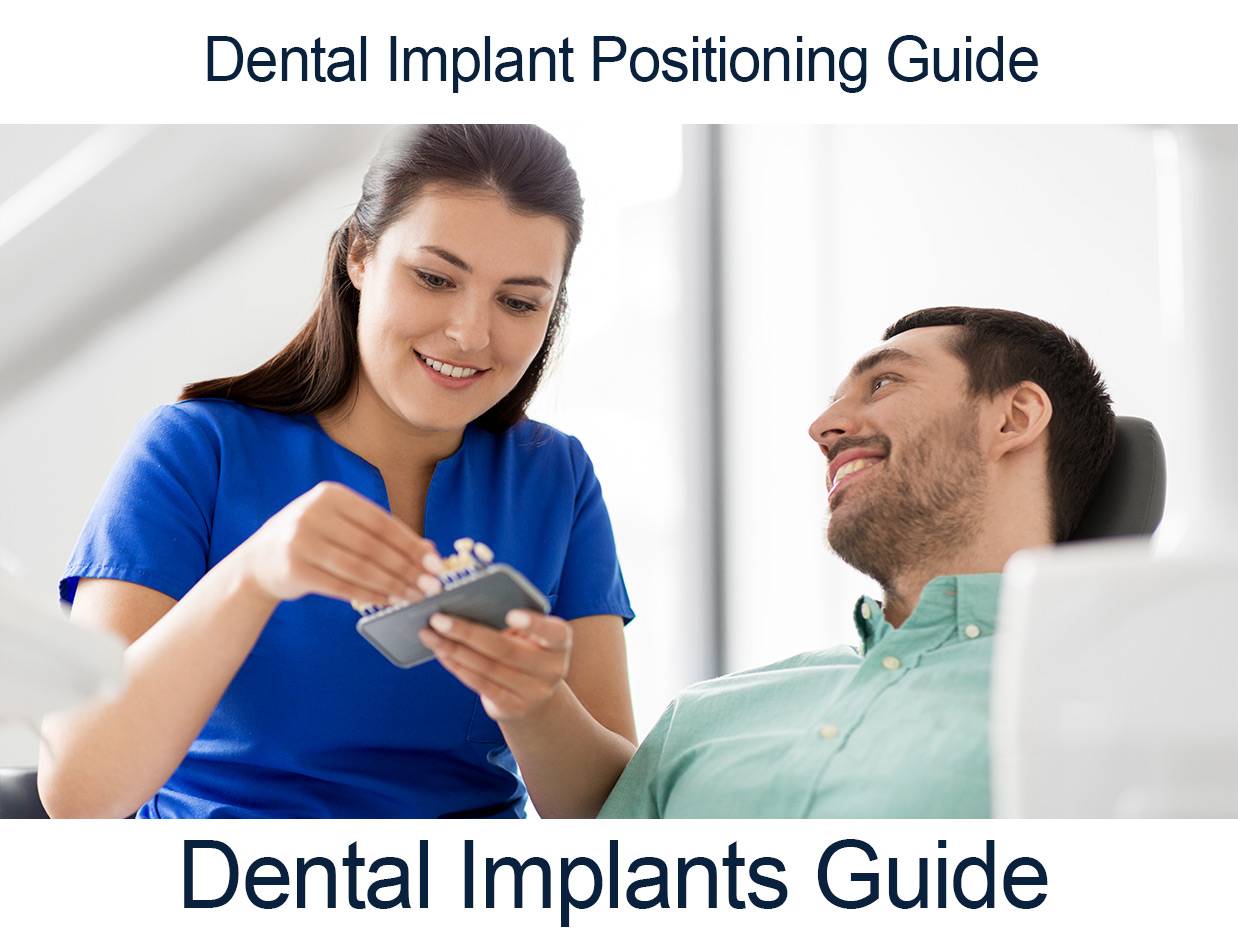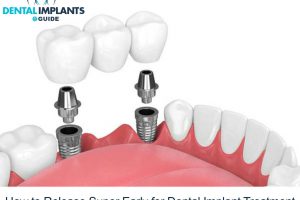Dental Implant Positioning Guide
Dental Implant Positioning Guide
The goal of an implant-supported reconstruction is to obtain optimal aesthetics and function. To achieve this, visualisation of the final restorative reconstruction is necessary before beginning treatment. The term ‘restorative-driven’ treatment planning has been used to identify this process.
High Quality Dental Implants Affordable Prices FREE Consultation

It requires a team approach of specialists who can develop a multi-disciplinary treatment plan. It starts with an accurate diagnosis, leading to a prognosis of each tooth and the overall dentition. This information will help the clinician develop the treatment options suitable for tooth replacement. Only when the goals have been defined can the sequence of therapy be established. Working backwards from the wax-up of the final diagnostic model of the proposed treatment assists not only with the management of the complex case but will help avoid mishaps. To learn more visit the leading dental implants guide today!

Can dental implants be placed next to each other?
We frequently attach implants, which can improve strength and works well. So in a case like this, although it may be more expensive in the short term to place two implants instead of one, the long-term success is likely to be much better with the two implants.
Effective communication between the team and the patient is essential. Understanding the patient’s expectations is key to a successful outcome. Deciding that these expectations are realistic requires a correct diagnosis and an inter-disciplinary treatment plan that is logical. This approach takes time and requires a comprehensive treatment discussion between the team members and a thorough case presentation.
Things To Consider Before Having Dental Implants
- Don’t rush into implant treatment.
- Discuss if technology will be used to ensure the safety of implant treatment.
- Discuss the implant brand and type of crown material to be used.
- Take time to discuss if the bone, gum and other teeth are healthy enough for implants to be placed.
What is a surgical guide for dental implants?
A surgical guide helps dentists place dental implants correctly and in suitable locations. These guides are developed by imaging software that creates a remapped plan to create a seamless dental implant process.
The restorative dentist will develop and direct the plan after gathering data, including a complete medical and dental history, clinical findings, photographs, mounted diagnostic casts and radiographs. Consultation with other specialists (periodontist, oral surgeon, orthodontist, endodontist) regarding the periodontal and endodontic health and any occlusal, skeletal and space problems will be required.
A correct diagnosis with long-term prognostic information is mandatory to develop an interdisciplinary treatment plan. All the treating specialists on the team need to collaborate their findings, which includes the following examinations.
Questions to ask your dentist.
- What are the advantages of a dental implant for my oral health?
- What happens if you don’t patch a lost tooth?
- When it comes to implants, how long do they last?
- What are the costs of implants?
- What is the dentist’s implant experience?
(Discuss your dental situation with us)
Is the use of narrow implants a viable option?
Narrow implants can be used in almost every area, except the posterior maxilla/mandibular with a limited bone height. The use of narrow implants is a safe and reliable technique with no problems related to function and aesthetics.
How do dental implants stay in place?
The custom crown is cemented or screwed onto the abutment to keep it in place permanently. Once the crown is in place, it should be indistinguishable from your natural teeth.
What is the failure rate for dental implants?
Dental implants have a high success rate, but some people experience dental implant failure. It’s estimated that about 5 to 10 per cent of dental implants fail, either shortly after a procedure or months or years later.
Can a dental implant be done in one day?
Getting your implants in one day is a much more accurate process compared to the traditional method. To answer the original question, yes, dental implants can be performed in one day. And not only can they be done, but they are done well. Teeth-in-an-Hour has a high rate of success.
Reference
Minoretti, R., Merz, B.R. and Triaca, A. (2000), Predetermined implant positioning by means of a novel guide template technique. Clinical Oral Implants Research, 11: 266-272. https://doi.org/10.1034/j.1600-0501.2000.011003266.x
Daniel Whitley, R. Scott Eidson, Ivan Rudek, Sompop Bencharit, In-office fabrication of dental implant surgical guides using desktop stereolithographic printing and implant treatment planning software: A clinical report, The Journal of Prosthetic Dentistry, Volume 118, Issue 3, 2017, Pages 256-263, ISSN 0022-3913, https://doi.org/10.1016/j.prosdent.2016.10.017
Ramasamy M, Giri, Raja R, Subramonian, Karthik, Narendrakumar R. Implant surgical guides: From the past to the present. J Pharm Bioallied Sci. 2013;5(Suppl 1): S98-S102. https://doi.org/10.4103/0975-7406.113306









